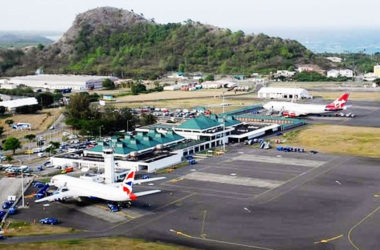THE PROBLEM
If you live “up north” you would be familiar with this scenario. You’re about to travel to Castries and you’re dreading the drive. You’re not sure how long the trip will take, because the last time, ninety minutes was not enough, and you were late for your engagement. Even before you get behind the wheel of your car, you know what to expect: snarling traffic along the Sir Julian Hunte Highway (SJHH) with bottlenecks at several points along the route such as: the turn into Rodney Bay; Monchy junction; S&S; Bois D’Orange; the entrance to Windward Island Gases/Glace Supermarket; and the Corinth Junction. After that, you may get a little reprieve until you get to Summersdale and later, L’anse Road.
If you’re headed beyond Castries, you may take the “back road” through to the Trois Piton and then into Bexon; but depending on the time of day, you may encounter more gridlock about a mile from the Dame Pearlette Louisy School.
The Effects
Amidst the many bottlenecks, and perhaps because of them, minibus operators can be seen breaking practically every traffic rule. One feels for these drivers. They’re in a classic catch-22 situation. Some must feel if they are to obey the rules, they will likely “suck salt.” They realise they’re burning more gas and earning less money. In other words, they know they are not being productive while they’re stuck in traffic.
Sometimes, congestion throws out positive signals. It can be a sign that more people have jobs to go to—and that’s always a good thing—and/or that the economy is growing. But what does traffic congestion say about our country’s productivity? Why should getting to work on time matter, if being stuck in traffic becomes so normalized, it becomes an acceptable excuse? Does it matter if construction crews routinely get to a work site an hour late because of traffic; or if school students can’t get to school on time?
The Likely future
As bad as things are, they will likely worsen before they improve. Banks and cooperatives are aggressively pushing car loans. Car dealers (new and used) say their inventories are selling out as fast as they arrive. Not even during the pandemic did this trend drop. There are more student drivers on our roads than ever before. The size of the car park at “Daher Mall” is another sign of more gridlock along the SJHH.
Who is Responsible?
The standard lament of many motorists is to place all blame for traffic congestion at the feet of planners. The fact is planners don’t make decisions. They plan and recommend solutions. If planners were as responsible as people claim, the comprehensive development plans that were drawn up in the mid-to-late 1980s—by a group of UN planners for the north-west corridor, Castries, Gros-Islet, Anse-la-Raye, Canaries and Vieux-fort respectively —would have been implemented decades ago, giving us some relief from our current traffic headaches.
None of this is to suggest tackling congestion is either easy or straightforward. Beyond cost, there are supply and demand issues to consider as well as short-term and long-term approaches. Short-term fixes cannot be applied willy-nilly as they can compromise long-term solutions.
The congestion along the SJHH reflects the steady growth of homes and businesses along the north-west corridor through to Gros-Islet and its environs. This growth will continue for some time and so the plan in the medium-to-long term ought to be to make Gros-Islet as self-containing as possible. However, with Castries as the hub of Government business and home of a seaport, airport, hospital and with our major airport in the south and most of our hotels in the north, the SJHH will continue to choke up, unless something is done.
We are told that the Kuwaitis are considering a proposal from the Government for the extension of the 4-lane carriageway from Choc to Gros-Islet. It is not known if or when work will resume on the road widening project from Gros-Islet to the Monchy intersection. That would bring some relief, but I fear not enough and not soon enough.
Some Possible Short-term Solutions
What can be done in the meantime? The following recommendations are being shared for the consideration of the Department of Infrastructure. Most of these are not new but they bear repeating because they have not been followed through.
• Establish a dedicated crew to always keep the “backroads” in a motorable state. Some parts of these roads are dangerously narrow and can/must be widened. Sight lines should also be improved by keeping road verges free of vegetation.
• Create filter lanes along the SJHH to allow minibuses to safely access bus stops much earlier than they now do.
• Bring forward the construction of the roundabout at Rodney Bay as well as the aerial walkway to enable pedestrians to safely traverse that part of the highway.
• Restrict through regular police presence the use of the turn-off/in at the Windward Islands Gases road during peak traffic hours.
• Reinstate the traffic lights at the Marisule/Corinth intersection
• Switch to adaptive traffic signals that will enable real time adjustments in the management of traffic systems.
• Conduct a road user survey to find out why, how often and when private motorists use the highway. The results of this exercise could inform other solutions, such as the use of virtual work, and the ramping up of e-government services.
• Upgrade Gros-Islet into a city with the capacity to provide a full range of administrative support services to residents. This might also enable the deployment of civil servants who live in Gros-Islet to work there.
• Encourage carpooling, as an element of duty-free concessions given to civil servants.
• Strengthen the forward planning capacity of the Department of Infrastructure and the Development Control Authority.
• Revisit the Development Plans mentioned earlier prepared by the UN Planners.
• Introduce the zoning of schools based on where students live and where their parents work.
• Prioritize the construction of the “Chemin Royale” road from Gros-Islet to Dennery. About a decade ago this project was considered a prime candidate for a public-private-partnership (PPP). It should still be pursued as such.













